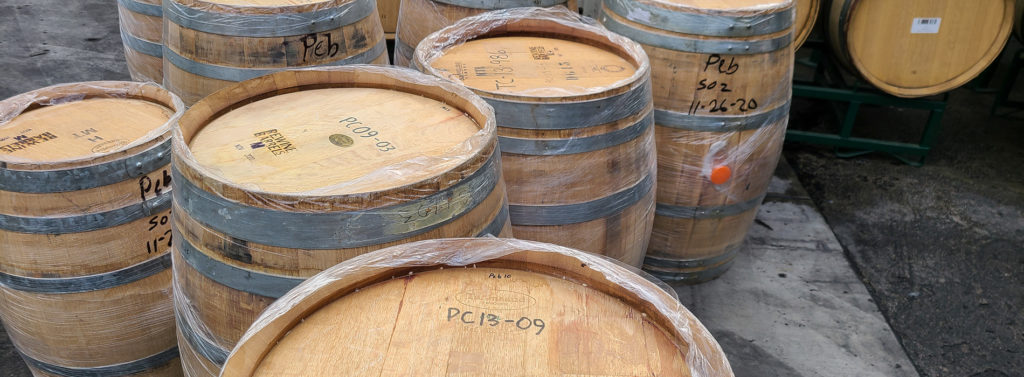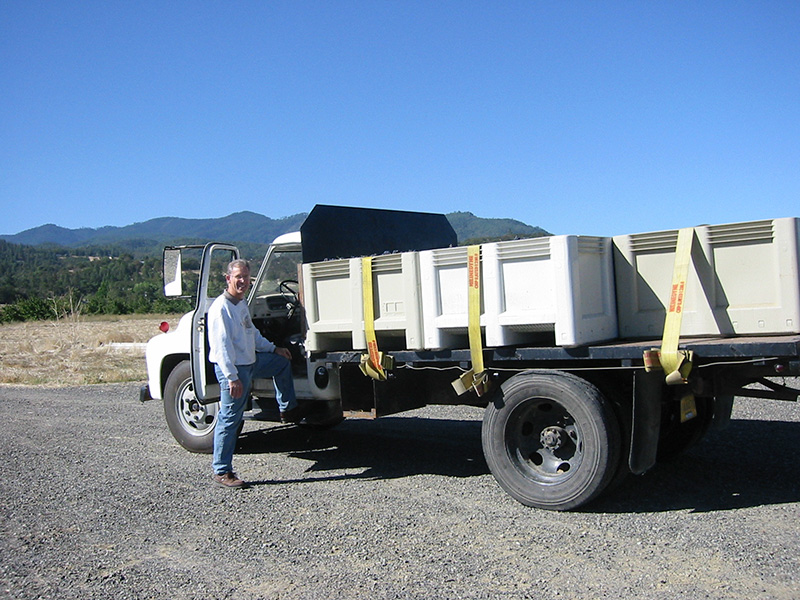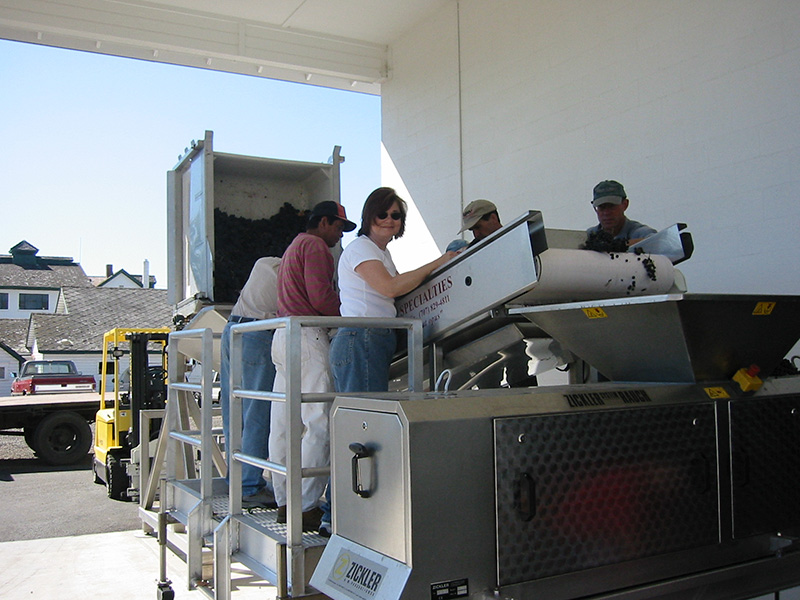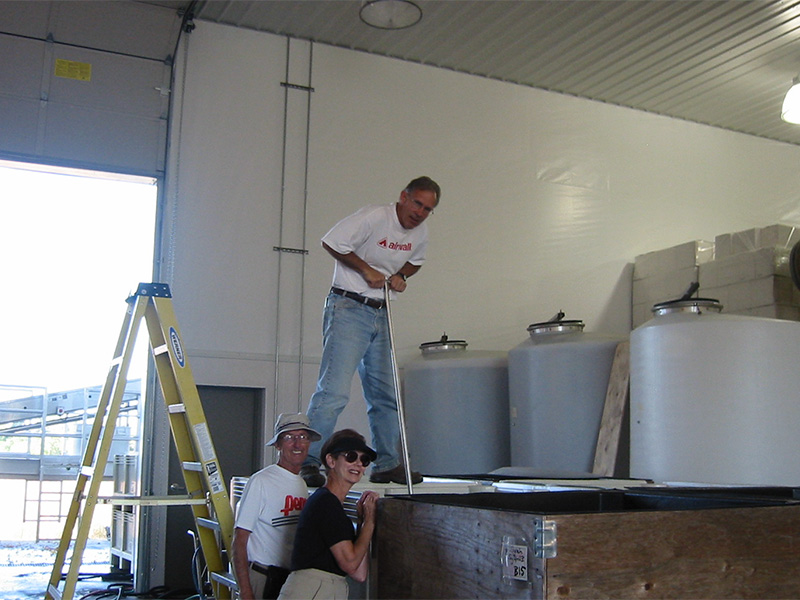
Winemaking

In order to produce the highest quality wines from the premium quality grapes of Ellis Vineyards, we have chosen to have our wines made at local larger wineries. Pebblestone Cellars wines are made under “custom crush” agreements at facilities that have state-of-the art processing and lab equipment and experienced winemaking staff. Our wines are made to our specification and we are intimately involved in the winemaking process from crush to bottling. Each of our wines is hand crafted in small lots with great care and attention.
The process of winemaking begins with Ellis Vineyard grapes delivered to the winery after harvesting at the optimal point of maturity. The short trip to the winery is in four-foot square plastic harvest bins usually hauled on the back of our trusty 1953 Ford F500 farm truck as shown in the picture at right.
Once at the winery the bins are off-loaded and dumped one by one into a hopper-fed moving sorting table shown in the picture where undesirable fruit, leaves and other material are culled out. From the sorting table, the fruit is then fed into either the stemmer-crusher or the press depending on the type of wine to be produced.

If the wine is to be a white wine the grapes are fed directly into a stainless steel bladder press for “whole-cluster pressing.” This process allows the juice to be removed from the skins in a very gentle manner producing the best fruit flavors and minimizing any extraction of harsh tannins. From the press, the wine is transferred to temperature-controlled stainless steel tanks where it is fermented at a cool and controlled temperature, further aiding in preserving and enhancing the fruit flavors in the resultant wine. The wine is racked in stainless tanks or into barrels but continues to be aged and settled on fine lees to enhance the mouth feel in the final wine. After aging, the wine is then fined and filtered and bottled.
If the wine is a red, the grapes are fed from the sorting table into the destemmer-crusher (usually operated only as a “destemmer” device). This process removes the stems that contain undesirable harsh tannins leaving whole grape “berries” which drop into one-ton fermenters. After a 24-hour “cold soak” period, cultivated yeast and nutrients (if required) are added to the must. When the fermentation begins, it is carefully monitored and controlled for temperature to ensure the proper balance of fruit flavors and color extraction in the resulting wine.
During fermentation, the fermenting wine produces a “cap” of skins which rises to the surface and is “punched down” twice a day as shown in the picture below.

When the fermentation is complete, the wine is racked into 60 gallon 100% French oak barrels for aging. We typically use 25% new oak in the barrel program with a goal to balance the oak flavors in the wine with the fruit flavors. After 18 to 20 months in oak, the wine is filtered and bottled.
